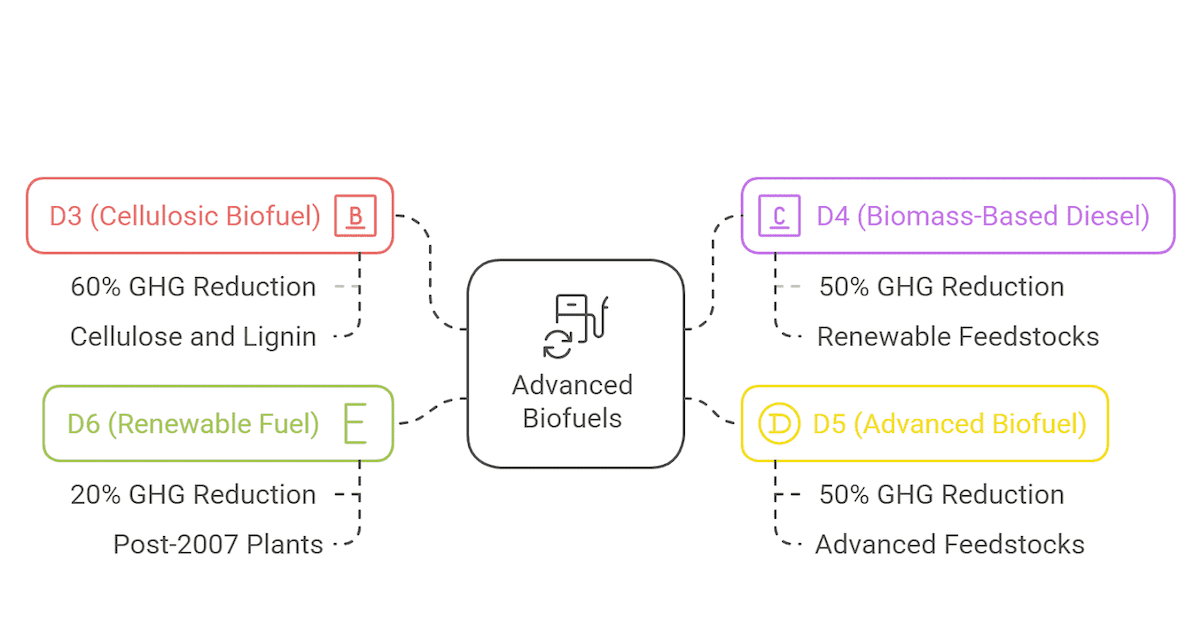At the heart of the RFS program lies Renewable Volume Obligations (RVOs), which dictate the amount of renewable fuel that must be blended into the nation’s transportation fuel supply each year. In this blog, we’ll explore the history of RVOs, break down what they are, and explain how the EPA establishes them.v

The Creation of RVOs
The RFS began with the Energy Policy Act of 2005 (EPA) aiming to cut greenhouse gas emissions, boost energy independence, and to support the domestic biofuels industry. The initial phase, known as RFS1, set modest renewable fuel blending targets. However, in 2007, the Energy Independence and Security Act (EISA) expanded the program into RFS2 which was implemented and finalized in 2010\. RFS2 introduced more ambitious goals which were lauded by many renewable fuels leaders, including RINSTAR’s own founder Clayton McMartin who wrote a white paper on the expansion in 2010\.
With RFS2, Renewable Volume Obligations (RVOs) were introduced and required refiners and fuel importers to blend specific amounts of renewable fuel each year. This shift brought clearer volume requirements for different types of biofuels and ensured a more structured and systematic approach to integrating renewable fuels into the energy sector.
Defining RVO
RVOs are the blending requirements that ensure renewable fuels are incorporated into transportation fuel each year. They are set as a percentage of total projected gasoline and diesel consumption, with the EPA determining these percentages based on statutory guidelines, fuel demand forecasts, and other key factors.
The RFS program classifies renewable fuels into four main categories, each identified by a specific D-code:
- D3 (Cellulosic Biofuel) – Made from cellulose, hemicellulose, or lignin, reducing GHG emissions by 60%.
- D4 (Biomass-Based Diesel) – A diesel alternative from renewable feedstocks, cutting GHG emissions by 50%.
- D5 (Advanced Biofuel) – Includes cellulosic and other advanced feedstocks, with a 50% GHG emissions reduction.
- D6 (Renewable Fuel) – Primarily corn-based ethanol, requiring a 20% GHG emissions reduction for post-2007 plants.
Each of these categories has its own RVO target, contributing to the overall goal of increasing renewable fuel use and reducing carbon emissions in transportation.

How the EPA Sets RVOs
The EPA is responsible for setting the annual RVOs and is legally responsible for setting a RVO for each year. An arduous process that requires careful consideration of several factors to ensure a balanced and effective approach.Typically, the EPA proposes RVOs in three-year cycles, announcing their plan and opening a public comment period where industry stakeholders and the public can provide feedback. After reviewing the feedback, the EPA finalizes their RVOs in a “Final Rule,” addressing the feedback and considering several factors:
- Fuel and Feedstock Availability – Ensuring there is enough supply of renewable fuels and their feedstocks to meet targets without disrupting the fuel market.
- Economic Impacts – Evaluating how RVOs affect fuel producers, refiners, and consumers to maintain a fair and stable market.
- Environmental Benefits – Assessing how renewable fuels contribute to lowering greenhouse gas emissions and improving air quality.
- Infrastructure Constraints – Considering whether blending facilities, fuel distribution networks, and vehicles can handle the required fuel volumes.
- Major National Events – Factoring in economic shifts, natural disasters, or global market events that could impact renewable fuel production.
RINSTAR stays on top of the latest RFS events and updates to keep you informed. If any changes impact your RVO or its deadline, we’ll make sure you know when and how those changes take effect—so you’re always prepared.
Individual RVOs
To determine an individual RVO, the process involves:
- Calculating total non-renewable gasoline and diesel volumes for the year.
- Applying the EPA’s annual percentage standards for each renewable fuel type.
- Accounting for any deficit carryover, where unmet RVOs from the previous year are added to the current obligation.
RINSTAR’s Renewable Volume Obligation Calculator makes it easy to track your registered fuel ownership and automate calculations, giving you a hassle-free way to stay on top of your RVO.
If you’re looking for a better way to manage your RINs or calculate your company’s RVO, we’re here to help! Request a RINSTAR demo today to see how our Renewable Volume Obligation Calculator and real-time RIN tracking & trading can simplify compliance and keep your operations running smoothly!
